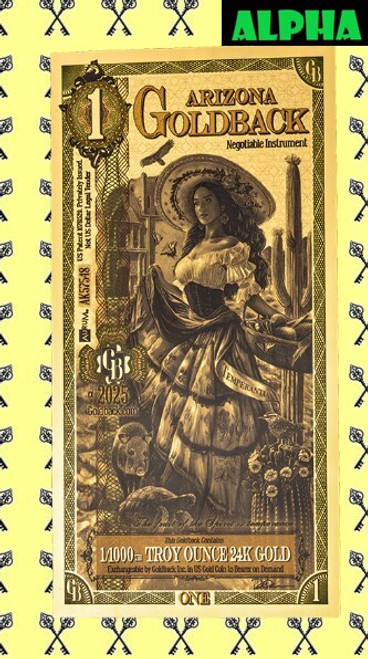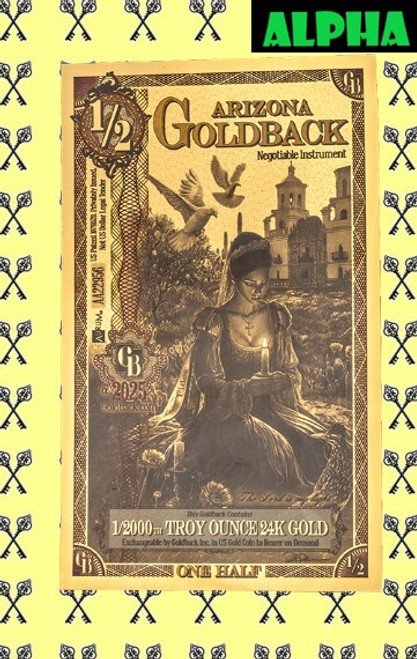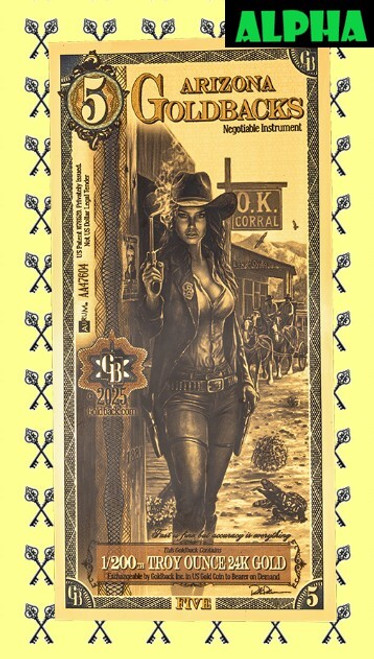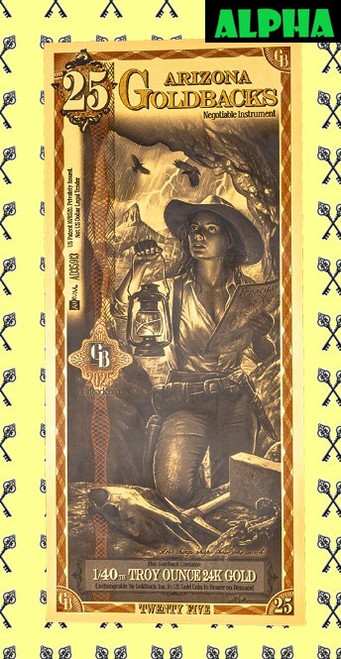Arizona
Why Arizona Was Chosen as the Next Goldback State
Arizona, known for its fierce independence, stunning desert landscapes, and rich blend of Native American and Western heritage, is a natural choice for the next Goldback series. The state has long championed individual liberty and economic freedom — values deeply aligned with the mission behind Goldbacks.
With an active interest in sound money, an engaged community of gold and silver enthusiasts, and robust state-level support for precious metal recognition, Arizona is poised to become a leader in the voluntary use of gold-based currency.
Gold-Friendly Legislation in Arizona
Arizona has made national headlines for its proactive stance on constitutional money. Here's how its laws support Goldbacks:
- House Bill 2014 (2017): Repealed capital gains taxes on gold and silver, recognizing them as legal tender. This legislation allows residents to use gold-backed currency without being penalized by the IRS for price fluctuation.
- Gold and Silver Legal Tender Act: Arizona formally recognized gold and silver coins as legal tender in the state, setting a precedent for voluntary, inflation-proof transactions.
- Arizona lawmakers have openly supported alternatives to fiat currency, emphasizing the need for resilient monetary systems in times of federal economic instability.
Arizona and Goldbacks: A Desert Rose of Economic Freedom
Arizona’s pioneering approach to sound money, paired with its deep historical and cultural legacy, makes it an ideal addition to the Goldback family. The state’s scenic beauty, inspiring figures, and commitment to freedom and self-reliance are perfectly captured in this gold-backed voluntary currency.
Join the movement. Collect and use Arizona Goldbacks — real gold in your hands, backed by history, virtue, and the spirit of the Southwest.
History of Gold in Arizona
Arizona's history is deeply intertwined with the discovery and extraction of gold, playing a significant role in the state's development. While copper eventually became Arizona's most prominent mineral resource, gold discoveries initially drew prospectors and settlers to the region. The allure of gold began with Spanish exploration, but large-scale mining took hold during the American period. Early prospectors found placer gold in the rivers and streams, particularly along the Colorado River and its tributaries. These initial discoveries spurred a wave of migration, contributing to the growth of towns and settlements.
The discovery of lode deposits, where gold is found within rock formations, led to more structured and intensive mining operations. The Bradshaw Mountains, near Prescott, became a significant gold-producing area in the late 19th century. Towns like Prescott and Wickenburg flourished as mining centers, attracting miners and entrepreneurs from across the country. The discovery of gold in the Tombstone district, though more famous for silver, also contributed to the state's gold production. The region's rugged terrain and arid climate posed challenges to early miners, but the promise of riches drove them to persevere.
The early 20th century saw the development of large-scale mining operations, with companies employing advanced technologies to extract gold from low-grade ore. The introduction of cyanide leaching and open-pit mining techniques allowed for the profitable extraction of previously uneconomical deposits. Arizona's gold production peaked in the early 1900s, contributing significantly to the state's economy. While copper eventually surpassed gold in economic importance, gold mining continued to be a vital part of Arizona's mining industry.
Today, while large-scale gold mining continues in Arizona, particularly as a byproduct of copper mining, recreational gold prospecting remains a popular activity. The state's rivers, canyons, and desert washes still hold the allure of hidden gold. Equipped with metal detectors and pans, enthusiasts search for gold flakes and nuggets, connecting with the state's rich mining history. The legacy of Arizona's gold rushes lives on in the ghost towns and historic mining sites scattered across the landscape, remnants of a time when the promise of gold shaped the state's destiny.
Arizona's gold history is a testament to the enduring allure of precious metals and their impact on the development of the American West. From the early placer discoveries to the modern mining operations, gold has played a significant role in shaping Arizona's economic and cultural landscape.
Where to buy Goldbacks in Arizona
Save on shipping by supporting your local Arizona Goldback dealers.
- Safeguard Precious Metals
9000 E. Pima Center Pkwy
Ste 150
Scottsdale AZ 85258
Phone: +1 (480) 842-5000
Website: https://safeguardpreciousmetals.net
Want Your Business Listed?
Do you accept, buy or sell Goldbacks in Arizona? Contact us to be featured on this page and help more people find your store.











